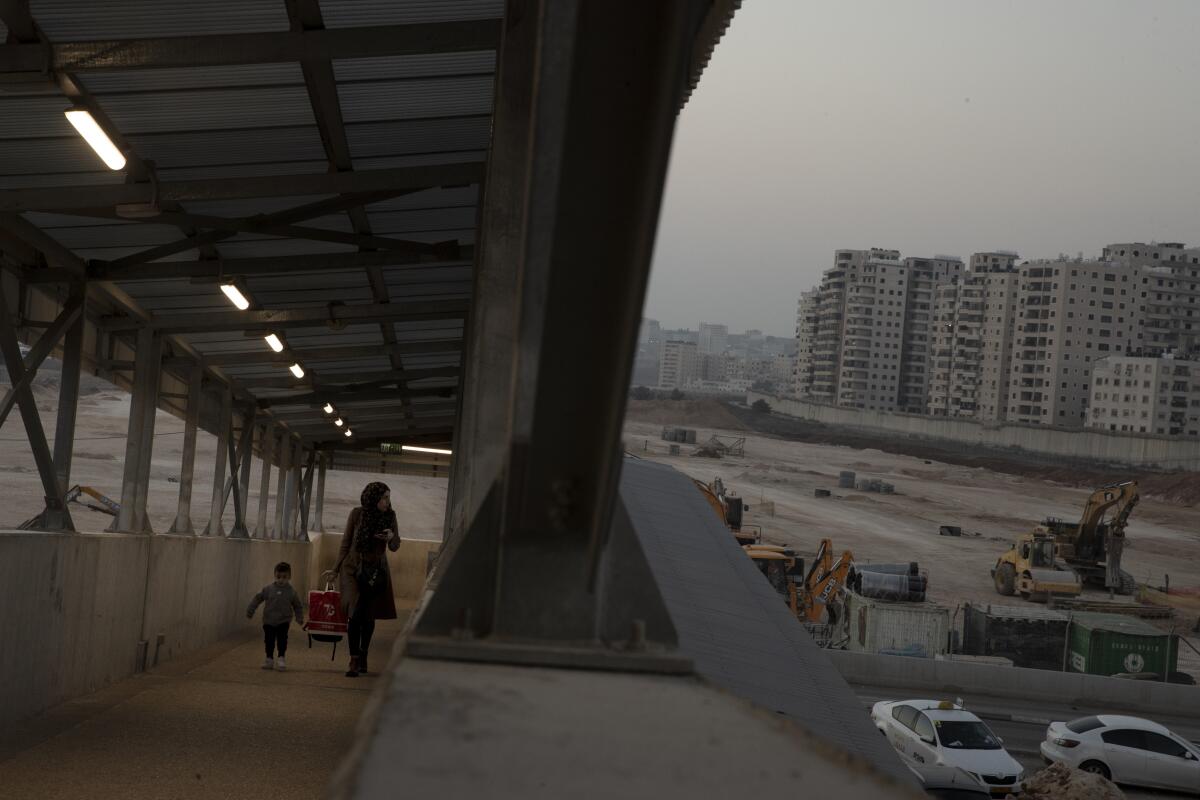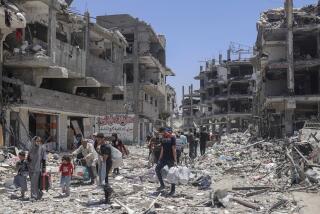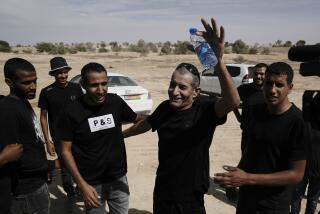Israel plans large settlement at shuttered Jerusalem airport

JERUSALEM — Israel is moving ahead with plans to build a massive Jewish settlement on the site of a long-abandoned airport that the Palestinians had hoped would one day service their future capital in East Jerusalem.
It’s one of several settlement projects that are advancing despite condemnation by the Biden administration, which along with the Palestinians and much of the international community views the settlements as an obstacle to resolving the century-old conflict.
The Atarot settlement would include 9,000 housing units marketed to ultra-Orthodox Jews, making it a “small city” of about 50,000 people next to three densely populated Palestinian communities, according to Hagit Ofran of the Israeli anti-settlement monitoring group Peace Now.
One of the Palestinian neighborhoods, Kafr Aqab, is within Jerusalem’s municipal boundaries but on the other side of Israel’s controversial separation barrier, a towering concrete wall that runs along the edge of the proposed site. The settlement would be right next to Qalandiya, the main military checkpoint between Jerusalem and the occupied West Bank city of Ramallah, through which tens of thousands of Palestinians travel each day.
And it would be built on what was once the runway of a century-old airport with a storied past, which today is abandoned and overrun by weeds, with crows nesting on the control tower.
“We are at the heart of a Palestinian urban area,” Ofran said. “If Israel builds here a settlement, we are blocking and torpedoing the possibility of an independent Palestinian state and a two-state agreement.”
Israel captured East Jerusalem in the 1967 Middle East War, along with the West Bank and the Gaza Strip, and annexed it in a move not recognized internationally. The Palestinians want all three territories to form their future state and for East Jerusalem to be their capital.
Israel considers all of Jerusalem to be its unified capital and views the settlements as Jewish neighborhoods built to meet the needs of a fast-growing population and to prevent the city from being divided.
“Jerusalem is a living, breathing, growing capital city of the state of Israel,” Deputy Mayor Fleur Hassan-Nahoum said. “The housing project will provide thousands of much-needed housing units.”
An Israeli government official said that the project is in the early planning stages, and that it will probably be years before it comes up for government approval. The official spoke on condition of anonymity because the plan is still being discussed at the municipal level.
Ofran acknowledged it would be at least four years before construction begins, but said the planning process is well underway. A municipal committee voted in support of the project Wednesday, and a district committee is expected to approve it Dec. 6.
“As soon as they approve it, it’s like a snowball,” Ofran said.
Hassan-Nahoum, the deputy mayor, noted that Israel has facilitated the construction of an industrial zone and a shopping mall nearby that cater to Palestinians.
But even if they can work and shop in Jerusalem, Palestinians suffer from a severe housing crisis rooted in a discriminatory permit system and lack of space. That has forced thousands to build without authorization — at risk of demolition — or move to the occupied West Bank. Dozens of Palestinian families face possible eviction by settler organizations pushing into crowded East Jerusalem neighborhoods.
Khalil Tufakji, a Palestinian cartographer and former peace negotiator focused on Jerusalem issues, said the new settlement is part of a larger process of pushing Palestinians out of the city and bringing in Jewish residents in order to change its character and prevent any future partition.
“It’s fundamental demographic change in favor of Israel,” he said.
At the southern edge of the planned settlement stands an abandoned control tower and terminal that were once part of a bustling international airport.
Britain built a military airfield in the early 1920s, when Jerusalem was the administrative capital of British Mandate Palestine. Jordan captured the site along with the rest of East Jerusalem and the West Bank in the 1948 war surrounding Israel’s creation and transformed it into a civilian airport catering to religious pilgrims and other travelers.
In the 1950s and 1960s, tourists could shuttle between Jerusalem and destinations across Europe and the Middle East, including Rome, Beirut, Cairo, Damascus in Syria, and even cities in Saudi Arabia and Iran. Eldad Brin, an Israeli researcher who recently published a scholarly article on the airport, says it serviced 100,000 passengers in 1966.
Israel continued to use the airport after the 1967 war, but mainly for local and charter flights as major airlines refused to service occupied territory. Shortly after the second Palestinian intifada, or uprising, began in 2000, the airport was closed down because of security concerns. Today its small baggage carousel is coated in dust, its floors littered with broken glass.
Brin would prefer to see the shuttered airport converted to an open space and cultural center, with the old terminal restored and turned into a museum.
“I’m a romantic,” he said. “You have this very big area, in the heart of this vast Arab community,” where parks and recreational areas are nearly nonexistent. “And you have an historical building which should be listed for preservation. It’s all there.”
The Palestinians had hoped to one day reopen a Jerusalem international airport for the state of Palestine. But the continual expansion of settlements across East Jerusalem and the West Bank — which are now home to more than 700,000 settlers — has made it nearly impossible to envision the creation of a viable Palestinian state alongside Israel.
Israeli Prime Minister Naftali Bennett and the right-wing parties that dominate Israel’s political system strongly support the settlements and are opposed to Palestinian statehood, even as most of the international community views a two-state solution as the only realistic way of resolving the conflict. There have been no substantive peace negotiations in more than a decade.
“There will be no such thing as the Jerusalem airport for the state of Palestine,” Tufakji said.
More to Read
Sign up for Essential California
The most important California stories and recommendations in your inbox every morning.
You may occasionally receive promotional content from the Los Angeles Times.










